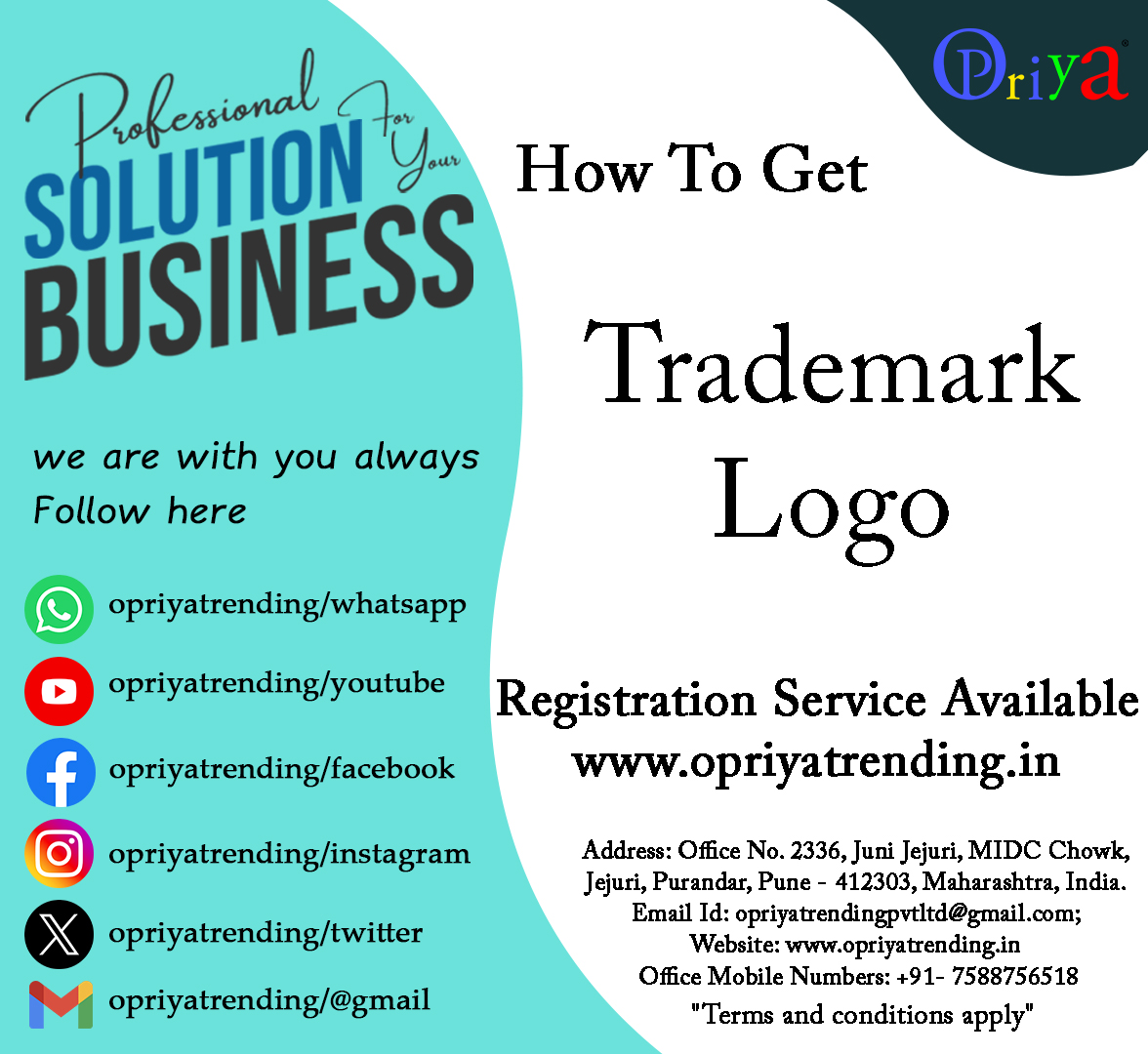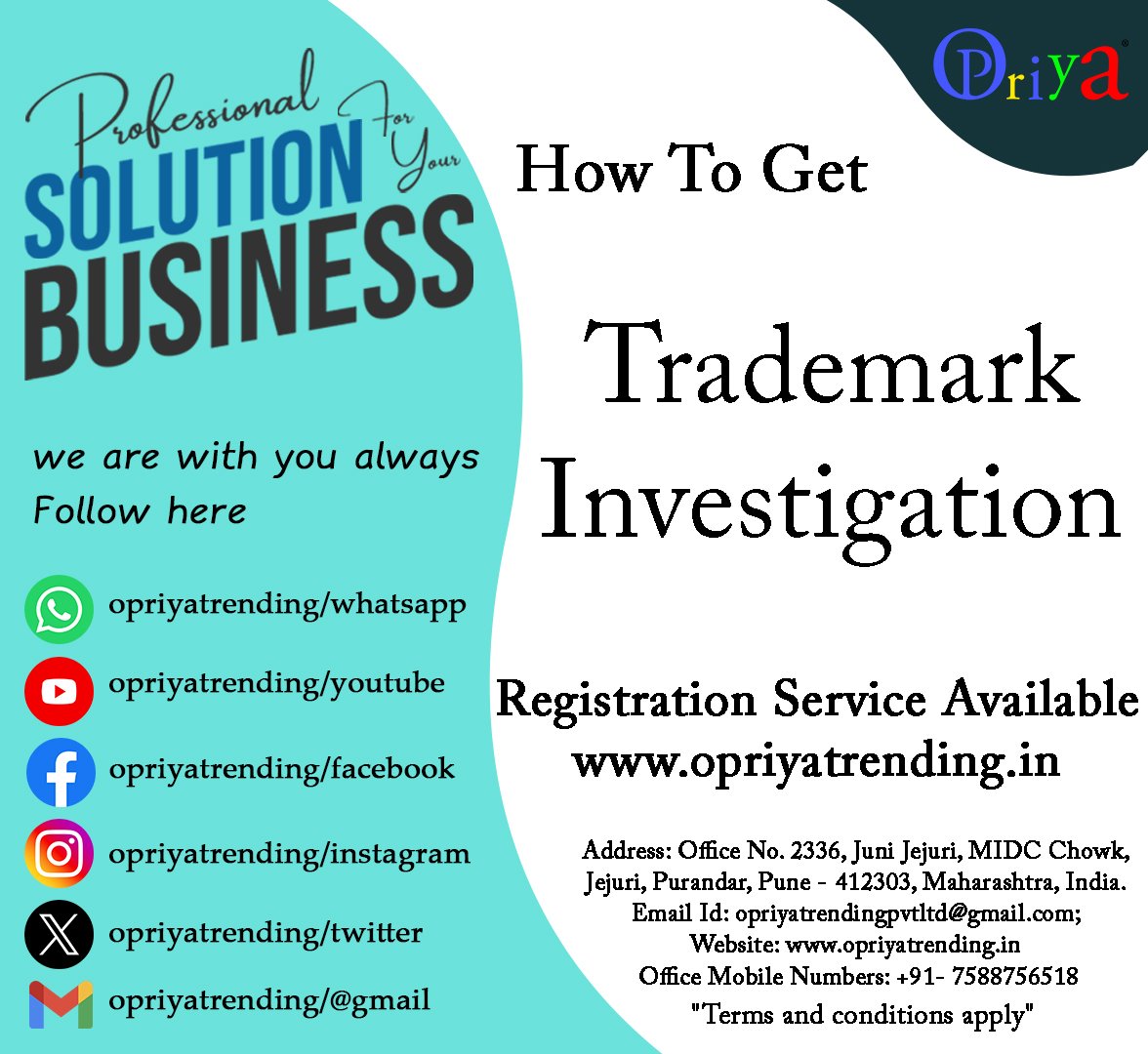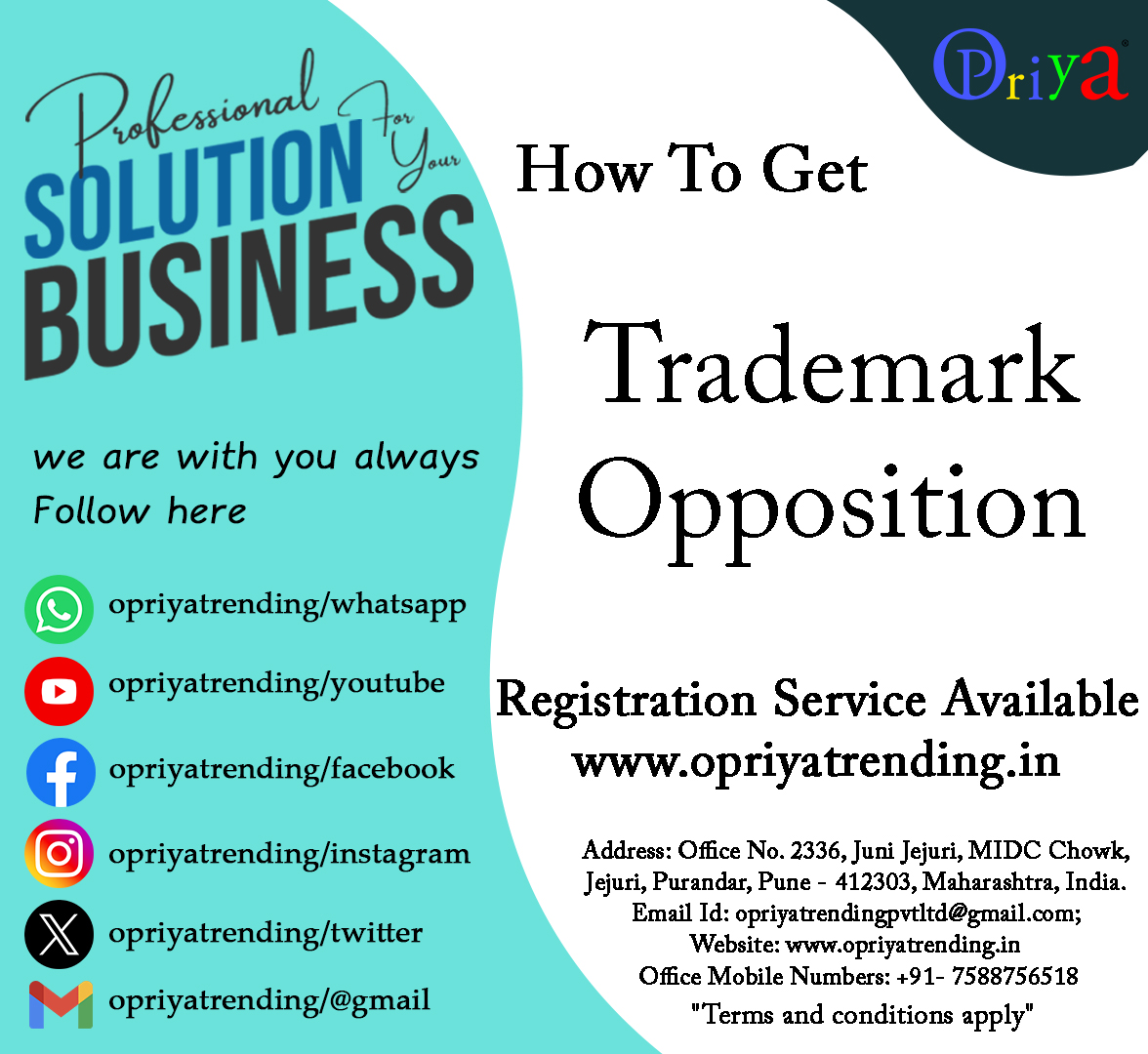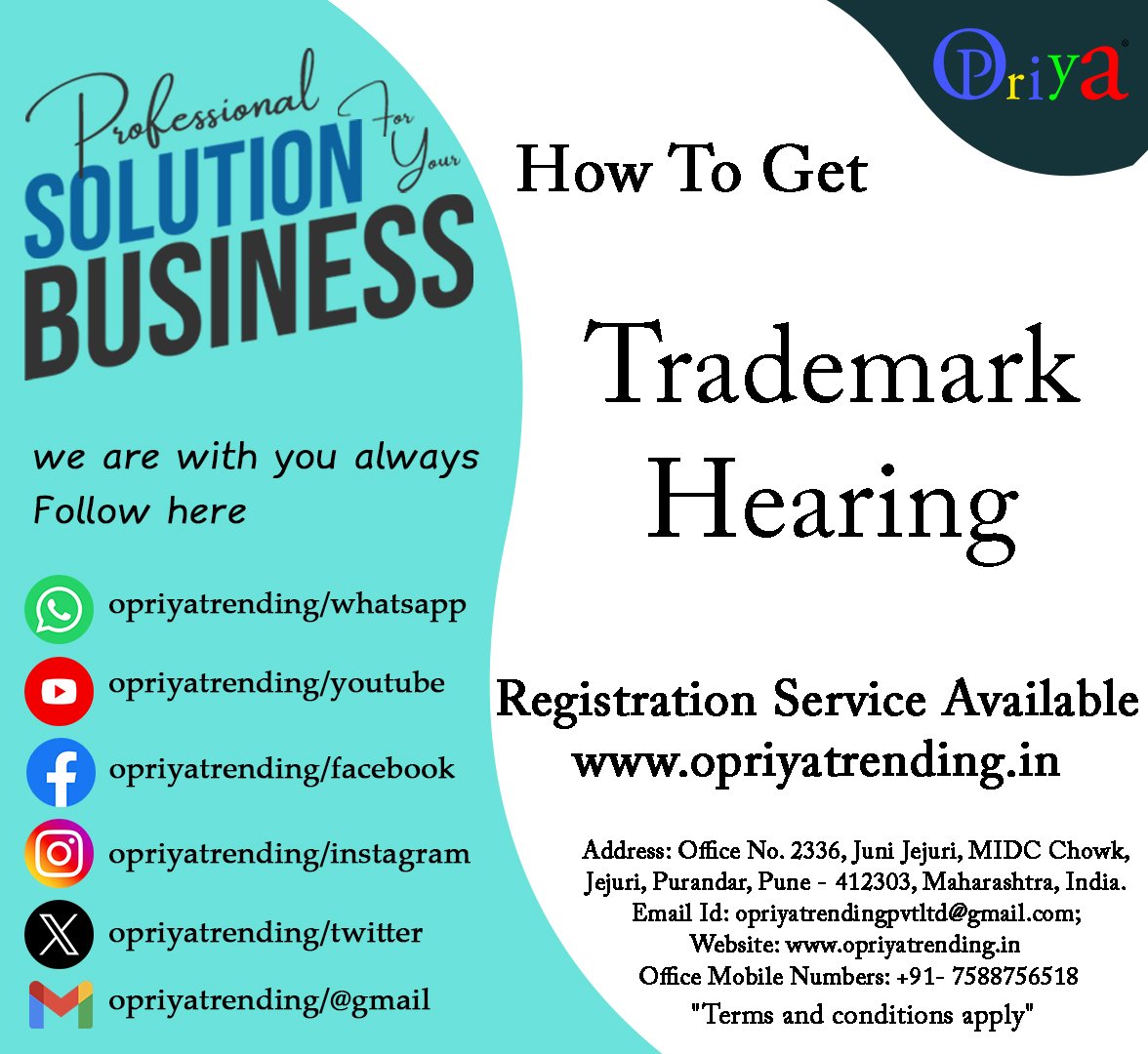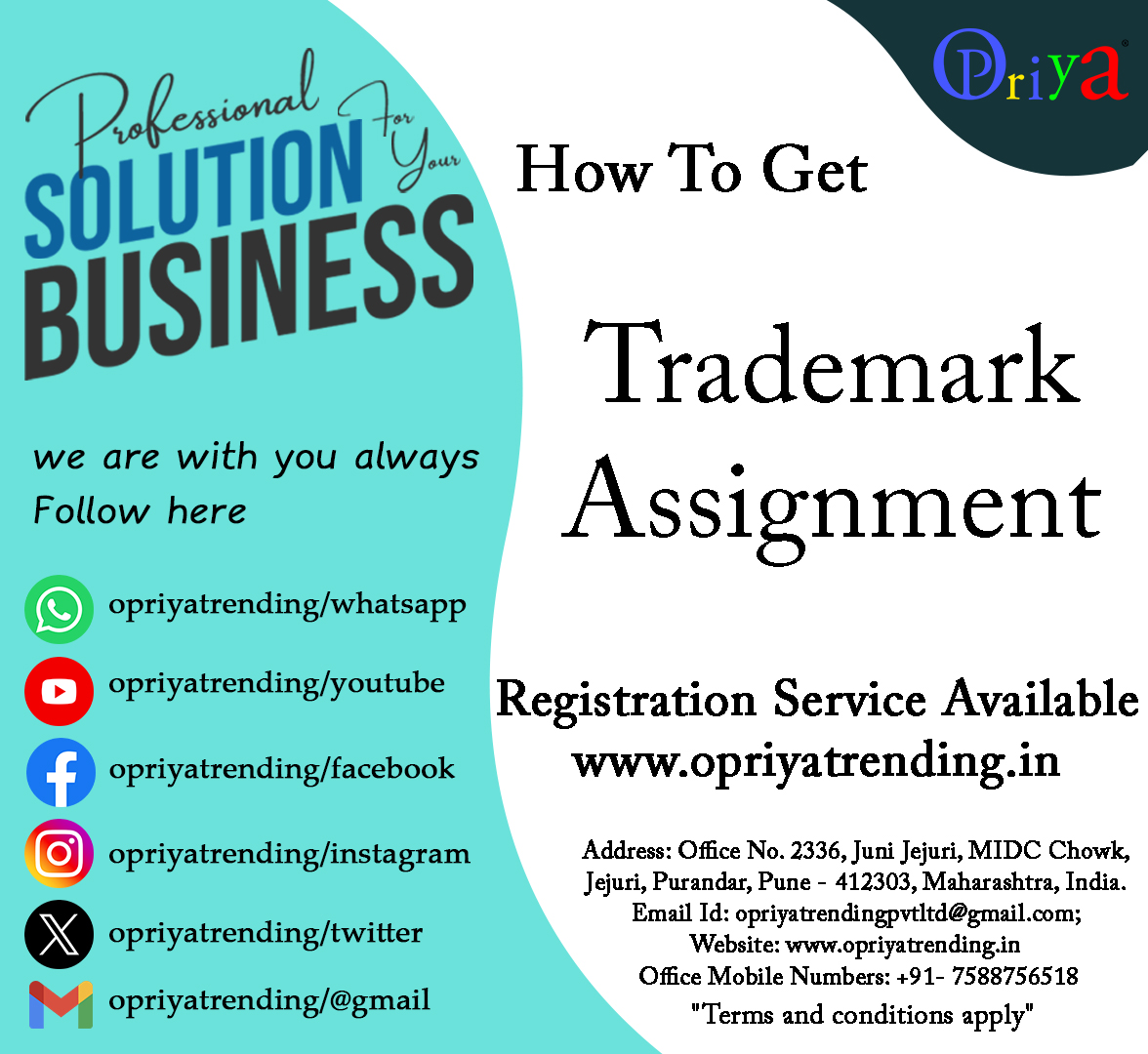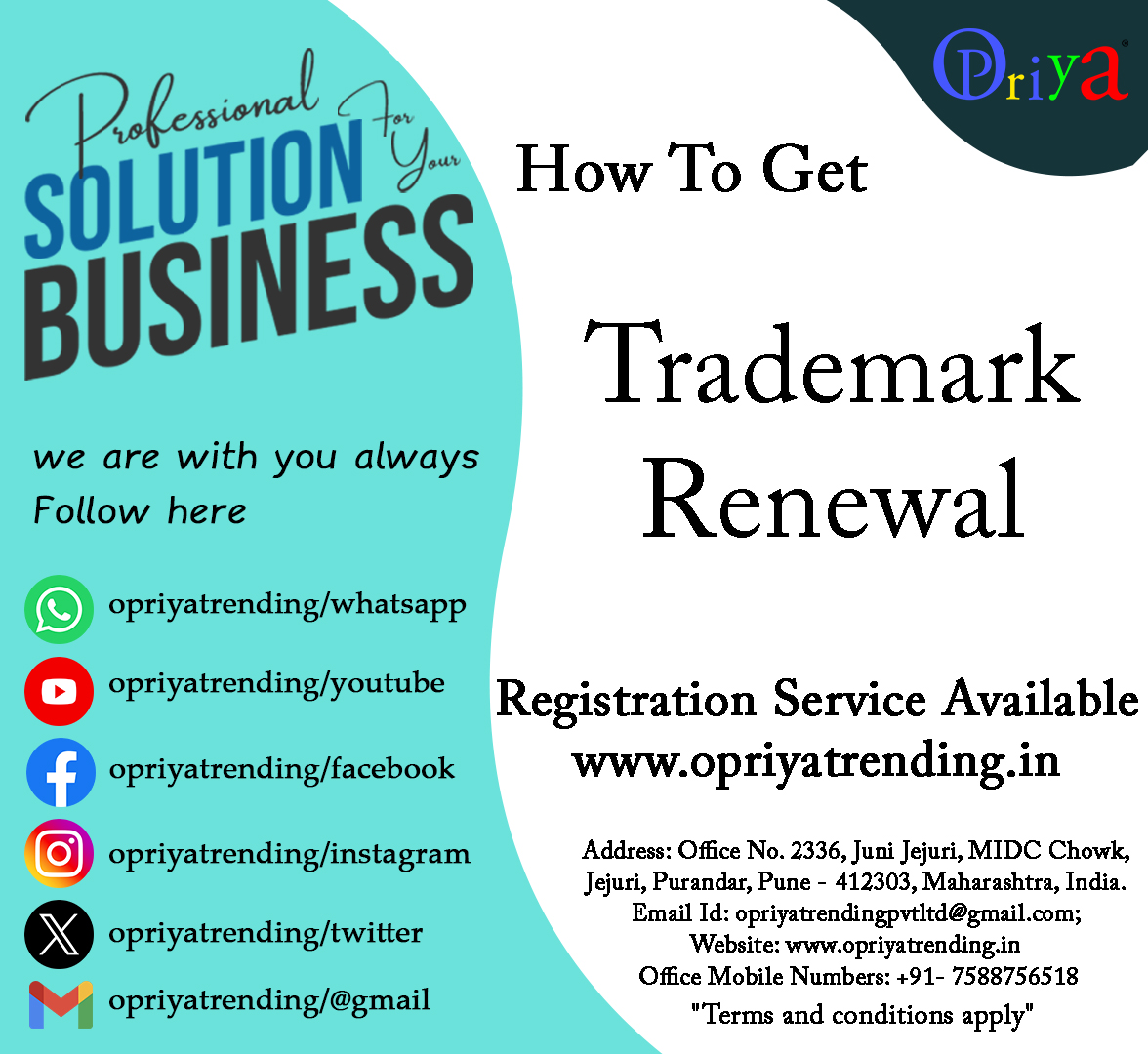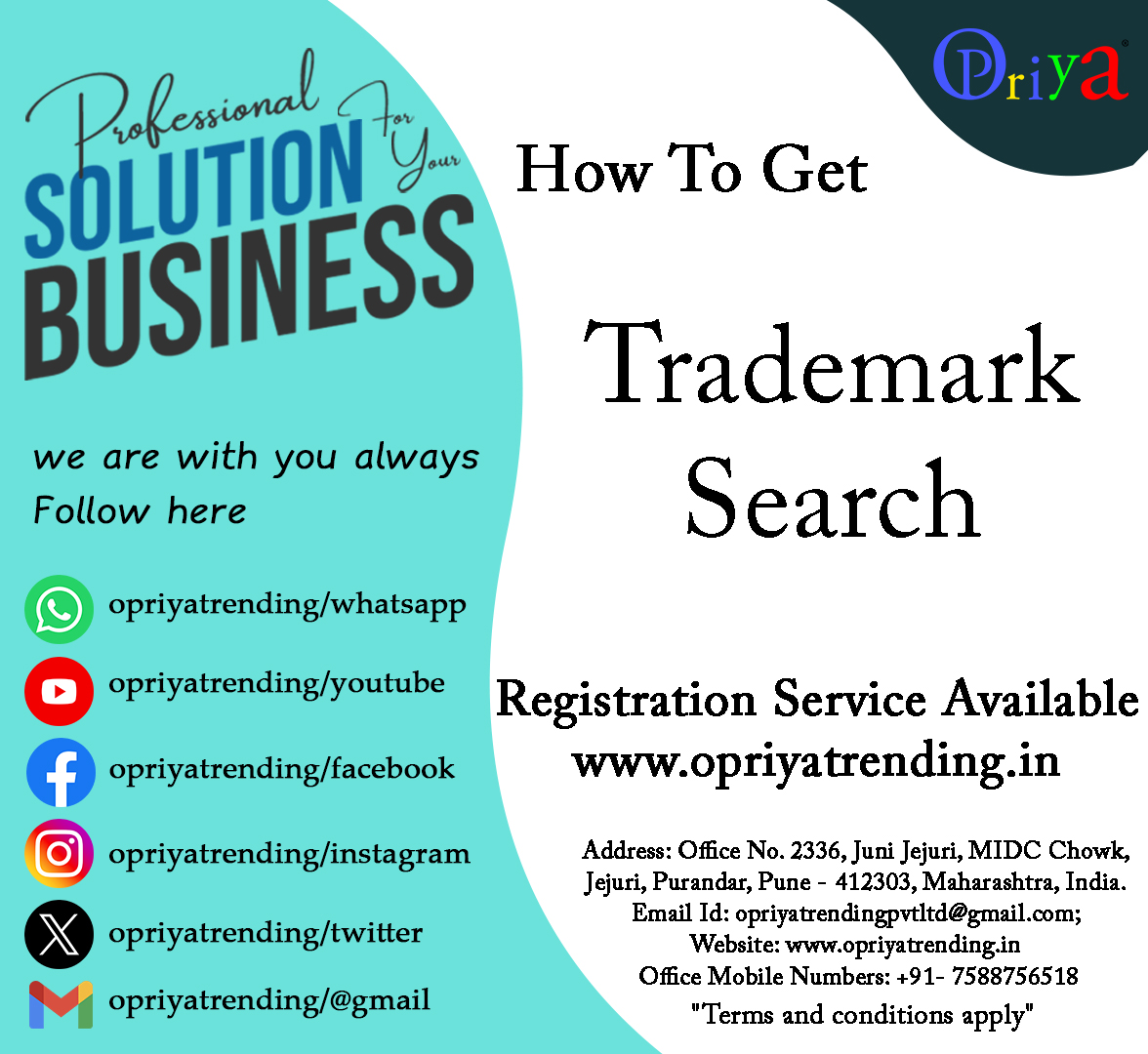❌ Trademark Infringement in India
Table of Contents
1. Introduction – Trademark Infringement in India
Trademark Infringement in India is a serious legal violation that occurs when an unauthorized party uses a registered mark, symbol, logo, or brand name that is identical or deceptively similar to another. In a rapidly growing business environment like India’s, the risks and consequences of Trademark Infringement in India have become more prevalent and damaging.
Trademark rights are governed by the Trade Marks Act, 1999, which protects brand identity and consumer trust. When an individual or company tries to exploit an established brand by copying its logo, name, or reputation, it undermines fair business practices and leads to loss of revenue, reputation, and legal battles. That is why tackling Trademark Infringement in India has become crucial in 2025.
O’Priya Trading Pvt Ltd specializes in helping businesses prevent and fight Trademark Infringement in India through vigilant monitoring, legal consultation, and complete registration services. This guide will help you understand the full scope of Trademark Infringement in India, what legal remedies are available, and how to act with confidence.
Whether you’re a startup, growing SME, or an established brand, understanding Trademark Infringement in India is the first step in protecting what you’ve built.
2. Types of Licenses Offered to Prevent Trademark Infringement in India
To prevent Trademark Infringement in India, we offer the following legal and registration license services:
✅ Trademark Registration License
Ensures official legal ownership of your brand name, logo, or slogan. Protects you from infringement claims.
✅ Watch & Monitoring License
Ongoing trademark surveillance across databases and domains to detect potential infringements in real time.
✅ Opposition Filing License
Helps file formal opposition against similar trademarks that may cause consumer confusion or dilution.
✅ Infringement Defense License
Legal support and representation to fight false infringement cases.
✅ Enforcement & Legal Notice License
Drafting and sending cease-and-desist notices to violators, including follow-up litigation if required.
These licenses are designed to help you secure, maintain, and enforce your rights and eliminate risks of Trademark Infringement in India.
3. Who Needs These Services?
Trademark Infringement in India can impact anyone with a brand to protect. Our services are for:
- Startups launching a new product or service
- Small businesses creating a local identity
- Franchise businesses needing uniform protection
- E-commerce brands facing high counterfeit threats
- Exporters/importers requiring global enforcement
- Content creators & influencers protecting brand personas
Example: A clothing brand called “Sparrow Wears” noticed a duplicate page called “SparrowWearz” selling similar clothes on Instagram. This is a direct example of Trademark Infringement in India. With O’Priya’s intervention, the infringing page was legally removed, and damages were claimed.
4. Why Choose O’Priya Trading Pvt Ltd for Trademark Infringement in India Services?
We are a leading authority in handling Trademark Infringement in India cases. Here’s why clients trust us:
✅ Legal Expertise
Our IP attorneys and consultants are trained in Indian and international trademark laws.
✅ End-to-End Support
From investigation to litigation—we provide complete protection under one roof.
✅ Affordable Packages
Legal support doesn’t have to be expensive. Our pricing is designed for startups and SMEs.
✅ Verified Case History
We’ve helped 200+ brands in India win or resolve Trademark Infringement in India cases.
✅ Proactive Strategy
We don’t just react to infringement; we help you build a defense strategy to prevent it in the first place.
Choosing us means securing peace of mind from Trademark Infringement in India in 2025 and beyond.
5. Registration Process to Prevent Trademark Infringement in India
To avoid Trademark Infringement in India, proper trademark registration is the first defense. Here’s our step-by-step process:
- Trademark Search – We scan Indian and international databases for existing conflicts.
- Filing the Application – Submit TM-A with relevant class details under IP India.
- Acknowledgment and Diary Number – You receive your TM number instantly.
- Examination Stage – Registrar checks for objections under Section 9 & 11.
- Reply to Examination Report – We handle legal replies to any raised objections.
- Journal Publication – Trademark is published for public opposition for 4 months.
- Opposition Handling – If anyone opposes, we represent you legally.
- Trademark Registered – Certificate issued, valid for 10 years.
This foolproof process ensures that Trademark Infringement in India won’t affect your brand.
6. Required Documents for Trademark Infringement in India Services
To initiate prevention or enforcement of Trademark Infringement in India, you need:
- Brand Logo or Name (in JPEG/Text format)
- Applicant ID proof – Aadhar/PAN/Passport
- Business Incorporation Certificate
- Class of Goods/Services
- Signed TM Authorization Letter (Form TM-48)
- Proof of Usage – Invoices, social media screenshots, ad creatives
- Infringement Evidence – Screenshots or samples of copied content/brand
These documents help us prove ownership and fight Trademark Infringement in India legally and effectively.
7. Cost Involved (Professional Fees) for Trademark Infringement in India Services
Here’s a transparent cost breakdown:
| Service | Fee (INR) |
|---|---|
| Trademark Search & Filing | ₹2,999 |
| Watch Service (1 Year) | ₹4,500 |
| Legal Notice Drafting | ₹3,999 |
| Opposition Filing | ₹5,999 |
| Court Litigation Support | On Request |
We offer bundled packages for continuous monitoring and multiple brands. Our mission is to provide accessible help against Trademark Infringement in India without burning a hole in your pocket.
8. Payment Refund Policy – No Refund (30-Day Money Back Guarantee)
Due to the legal nature of Trademark Infringement in India services, all fees are non-refundable once work begins. However:
- 30-day guarantee only applies if we fail to initiate action.
- Pre-investigation cancellation may attract a small processing deduction.
- Court or Registrar fees are non-refundable under any circumstances.
We’re committed to fair and transparent service delivery.
9. Terms and Policy
By using our services, you agree to:
- Provide true and complete documents.
- Use trademark services for legal and ethical business purposes.
- Avoid misuse of legal provisions under Trademark Infringement in India law.
- Accept responsibility for delays caused by incomplete documents.
For detailed terms, visit: opriyatrending.in/terms
10. Time Taken to Resolve Trademark Infringement in India Issues
Resolution timelines vary:
| Task | Timeframe |
|---|---|
| Filing Legal Notice | 2–4 Days |
| Opposition Handling | 2–3 Weeks |
| Full Court Litigation | 3–6 Months (approx.) |
| TM Registration | 6–12 Months |
Quick action leads to faster resolution. Don’t delay addressing Trademark Infringement in India.
11. Common Mistakes to Avoid in Trademark Infringement in India
Mistakes that lead to devastating outcomes:
- Not registering your trademark – Leaves you legally unprotected.
- Delaying legal notice – Allows the infringer to build a case.
- DIY filing – Errors can cost you your mark.
- Choosing a similar name knowingly – Makes you the infringer!
- Not monitoring after registration – Infringement may go unnoticed.
Avoiding these negative practices ensures you remain safe from Trademark Infringement in India.
12. Call-to-Action – Protect Your Brand Now!
🚨 Don’t wait for someone to steal your brand. Fight Trademark Infringement in India with legal confidence.
📩 Email: opriyatrendingpvtltd@gmail.com
📱 WhatsApp: +91 7588756518
👍 Facebook: O’Priya Trading Pvt Ltd
🌐 Website: opriyatrending.in
✅ Secure your brand today. Apply with Full Confidence 2025 – Only at O’Priya Trading Pvt Ltd.
13. FAQs on Trademark Infringement in India
Q1: What is Trademark Infringement in India?
It’s unauthorized use of a registered trademark, leading to confusion or misrepresentation.
Q2: What can I do if someone uses my logo?
You can send a legal notice or file an infringement suit in court.
Q3: Can I claim compensation?
Yes, if damages are proven. Courts can award compensation.
Q4: Is registration mandatory for filing a case?
Yes. Without a registered trademark, your rights are limited.
Q5: How do I avoid infringing others?
Always conduct a professional trademark search before use.
Q6: What happens if I receive a legal notice?
You must respond legally. We offer reply drafting and defense.
Q7: Can social media misuse be treated as infringement?
Yes. Online misuse is fully actionable under the law.
Q8: How long does a court case take?
From 3 months to 1 year depending on complexity.
Q9: Can O’Priya help me fight a false infringement claim?
Absolutely. Our legal defense team will handle everything.
Q10: Do you offer international support?
Yes. We handle WIPO and global enforcement as well.
O’Priya Trading Private Limited: All India License Registration Service Provider
In today’s complex regulatory landscape, obtaining licenses and regulatory approvals in India has become more essential than ever for businesses, institutions, and individuals. Whether it’s an arms license, FSSAI registration, company incorporation, or compliance with the latest government norms, having the right license determines your legitimacy, credibility, and operational capacity.
One company leading this transformation by providing seamless, reliable, and legally compliant license registration services across India is O’Priya Trading Private Limited. With a strong commitment to transparency, process efficiency, and client satisfaction, O’Priya Trading Pvt. Ltd. has emerged as a trusted name in the Indian licensing domain.
🔷 Company Overview
Legal Name: O’Priya Trading Private Limited
Nature of Business: License Registration, Compliance Advisory, Government Liaison Services
Operational Scale: Pan-India
Head Office: Registered in India, with service availability across all states and union territories
📞 Call-to-Action (CTA) – Apply Now with Confidence!
Ready to secure your Licence Apply with Full Confidence in All Indiaa?
👉 Contact Us Today!
📧 Email: opriyatrendingpvtltd@gmail.com
📱 WhatsApp: +91 7588756518 🔗 Website: https://opriyatrending.in 👍 Facebook: O’Priya Trading Pvt Ltd
Apply with Full Confidence in 2025.
🏛️ What Does O’Priya Trading Pvt Ltd Do?
O’Priya Trading Private Limited specializes in license registration services across India, offering a full range of end-to-end solutions to institutions, businesses, and individuals seeking regulatory permissions and licenses. From document preparation to submission, legal verification, and post-approval compliance, they serve as a single-window license consultancy provider.
🗺️ Pan-India Service Coverage
What makes O’Priya Trading unique is its all-India licensing facilitation network. Unlike regional agencies that operate within narrow jurisdictions, O’Priya has built an operational capacity to deliver services in every Indian state and union territory.
🌍 States Served Include:
- Delhi, Maharashtra, Uttar Pradesh, Gujarat, Rajasthan, Madhya Pradesh, Karnataka, Tamil Nadu, Kerala, Telangana, Punjab, Haryana, Assam, West Bengal, Bihar, Jharkhand, Odisha, Chhattisgarh, and more.
🏢 Cities with Active Clients:
- Mumbai, Pune, Delhi, Hyderabad, Bangalore, Kolkata, Ahmedabad, Chennai, Jaipur, Lucknow, Bhopal, Indore, Surat, Patna, and others.
Through a digital-first approach, coupled with experienced local legal liaisons, O’Priya ensures consistency in documentation, faster government approvals, and responsive client support.
💡 Why Clients Trust O’Priya Trading Pvt Ltd
1. ✅ Transparency & Ethics
🔒 100% Transparent | No Hidden Fees | Pan-India Services We believe in:
- Clear timelines
- Upfront pricing
- Honesty about payment policies (non-refundable, refundable, no surprises)
- Total confidentiality
2. 🧾 Documentation Expertise
Most license applications are delayed due to incomplete, incorrect, or improperly formatted documents. O’Priya’s legal consultants help you prepare foolproof documentation as per the latest formats demanded by regulatory bodies.
3. 🧑⚖️ Government Liaison
Whether it’s a district magistrate’s office, arms licensing authority, food safety department, or ROC office, O’Priya has built solid working relationships with relevant departments across states.
4. 🚀 Quick Turnaround
With strong process knowledge and digital tools, O’Priya delivers faster application submissions, consistent follow-ups, and streamlined approvals—ensuring minimal disruption to your business.
5. 💬 Client-Centric Support
They offer multi-channel communication: WhatsApp, email, video calls, and in some cases, in-person assistance. Clients are never left guessing about the status of their application.
📂 Service Flow: How It Works
Step 1: Free Consultation
Client reaches out via WhatsApp or email. A dedicated case manager responds with guidance and documentation checklist.
Step 2: Document Compilation
The team helps the client gather and format all required documents—identities, justifications, organizational registrations, etc.
Step 3: Application Filing
Forms are filled and submitted either physically or digitally, depending on the department’s workflow.
Step 4: Verification Support
Whether it’s a police inquiry or local office inspection, the team ensures you’re prepared and compliant.
Step 5: Approval & Delivery
Once approved, the license or certificate is collected and shared with the client via secure channels. Renewals and annual compliances are also managed, if opted for.
🔍 Industries Served
| Industry | Licenses Provided |
| Security | PSARA, Arms License |
| Food & Beverages | FSSAI, Shop Act, GST |
| Manufacturing | Factory License, Pollution NOC |
| Healthcare | Drug License, Biomedical Waste License |
| Retail & E-commerce | GST, MSME, Trademark |
| Education/Training | Arms License (Training), ISO, Accreditation support |
This industry-specific approach helps clients get exactly what they need—no more, no less.
📊 Success Metrics (As of 2025)
- ✅ 4,000+ Licenses Approved
- ✅ 95% Success Rate on First Submissions
- ✅ 100+ Cities Served
- ✅ 40+ License Categories Covered
- ✅ 500+ Institutional Arms Licenses Facilitated
🔄 Annual Compliance Services
Beyond just registration, O’Priya also offers post-licensing support, such as:
- Annual license renewals
- Change of address or ownership updates
- Firearms inspection audit preparation
- Document maintenance and digital filing
- Regulatory upgrades (as per rule changes)
This holistic approach ensures clients remain compliant even after license issuance.
📌 Why Choose O’Priya Over Others?
| Feature | O’Priya Trading Pvt Ltd | Typical Local Agent |
| Service Reach | Pan-India | Limited to district/state |
| Process Transparency | High (With Updates) | Often vague or hidden |
| Legal Expertise | Qualified Advisors | Informal guidance |
| Communication | Email, WhatsApp, Call | Mostly phone |
| Refund/Policy Clarity | Documented Terms | Unclear or non-existent |
| Renewal Reminders | Included | Rarely provided |
For businesses and institutions who cannot afford non-compliance or delays, O’Priya offers institutional-grade service quality at competitive prices.
🧭 Vision and Future Outlook
O’Priya Trading Pvt Ltd envisions becoming India’s most trusted regulatory compliance partner. With ongoing investments in:
- AI-based document automation
- Online dashboards for tracking license status
- Partnerships with regional lawyers and consultants
- Digital KYC and identity verification tools
…they aim to make India’s license ecosystem simpler, faster, and corruption-free.
Call-to-Action (CTA) – Apply Now with Confidence!
Ready to secure your Licence Apply with Full Confidence in All Indiaa?
👉 Contact Us Today!
📧 Email: opriyatrendingpvtltd@gmail.com
📱 WhatsApp: +91 7588756518 🔗 Website: https://opriyatrending.in 👍 Facebook: O’Priya Trending Pvt Ltd
Apply with Full Confidence in 2025.
🛡️ Legal. Reliable. Fast. That’s the O’Priya Promise.
📋 List of Services (with Reconstructed Links)
Below is the categorized list of services as per the website’s usage index. Where possible, we’ve added direct or pattern-based links.
1. Arms License Services
- Arms for Individual License Registration
- Arms for Institution License Registration
- Arms for Sports License Registration
- Arms for Dealers License Registration
- Weapons Manufacturing License Registration
2. AYUSH License
- AYUSH Loan & Others License
- AYUSH Manufacturing License
- AYUSH Distribution License
- AYUSH Clinic License
- AYUSH Retail License
3. BIS/ISI/ISO Certifications
4. Compulsory Registrations
- MSME/Udyam Registration
- Startup India Registration
- FSSAI Registration (Central/State)
- Legal Entity Identifier Code
- Trade License
- Fire License
- Digital Signature
- ICEGATE Registration
- FCRA Registration
- 80G and 12A Registration
5. DOT/Telecom Licenses
- ISP License
- NLD/ILD License
- UL VNO License
- PM-WANI Registration
- SACFA Clearance
- IP-1 Registration
- TEC Certificate
- AGR Return Filing
6. Drug License
7. Electrical License
8. GST & Taxation
9. IPR Services (Trademark, Copyright, Patent)
- Trademark Registration
- Trademark Objection Reply
- Patent Filing (Provisional/Complete)
- Copyright Registration
- Design Registration
10. Liquor License
11. MCA Services
- Private Limited Company Registration
- LLP Registration
- OPC Registration
- Annual MCA Compliance
- Company Closure
12. PESO License
13. PSARA License
14. Pollution Control
15. Regulatory Bodies
- NBFC Registration (RBI)
- FFMC & P2P Lending
- Legal Metrology Packager License
- IRDAI Corporate Agent License
📞 Contact O’Priya Trading Pvt Ltd Today
👉 Contact Us Today!
📧 Email: opriyatrendingpvtltd@gmail.com
📱 WhatsApp: +91 7588756518 🔗 Website: https://opriyatrending.in 👍 Facebook: O’Priya Trending Pvt Ltd
🛡️ Legal. Reliable. Fast. That’s the O’Priya Promise.
💖 Why opriyatrending.in is More Than Just a Service Platform
In a country as vast and complex as India, navigating government registrations can feel overwhelming, stressful, and even hopeless at times. But opriyatrending.in doesn’t just offer “services.” It offers reassurance, clarity, and a sense of control—when you need it most.
🛑 The Fear of Rejection, Delays, and Loss
You might have tried applying for licenses yourself before—endless documents, non-responsive departments, confusing portals. It can leave you feeling:
- ❌ Lost in bureaucracy
- ❌ Afraid your business will never take off
- ❌ Unsure who to trust
O’Priya Trading Pvt. Ltd. understands this fear—and fights it by giving you the guidance you were never offered before.
💪 A Partner in Your Growth Journey
Whether you’re a dreamer starting your first startup, a farmer protecting your land, a doctor opening a clinic, or a dealer building your future—this company walks beside you.
- They help you register your identity
- They protect your investment
- They stand between you and the wall of red tape
When opriyatrending.in helps you get your license, they’re not just checking boxes. They’re helping you move forward with confidence.
🧠 A Calm Voice When Everything Feels Chaotic
In a system full of delays, errors, and vague processes, opriyatrending.in offers:
- 🧾 Clear documentation guidance
- 🕐 Honest timelines
- 📞 A human voice when you call or WhatsApp
When you’re in a crisis—whether it’s a license rejection or urgent compliance—they don’t ignore you. They respond. They care.
🌱 Your Dreams Deserve to Be Legal, Protected, and Empowered
Every license, every registration, every clearance—represents a life goal.
It’s your right to:
- Own a weapon for protection
- Start a small company
- Launch a new StartUp company
- Open a food business legally
- Register a company and pass it on to your children
Opriyatrending.in ensures that no dream is delayed because of red tape.
🔗 It’s Not Just a Website It’s a Lifeline.
📍 When you open opriyatrending.in, you’re not just clicking on a page.
You’re saying:
“I’m ready to take a step toward my dream, but I need help.”
And that’s exactly what O’Priya Trading Pvt. Ltd. is here for.
📞 Contact O’Priya Trading Pvt Ltd Today
👉 Contact Us Today!
📧 Email: opriyatrendingpvtltd@gmail.com
📱 WhatsApp: +91 7588756518 🔗 Website: https://opriyatrending.in 👍 Facebook: O’Priya Trending Pvt Ltd
🛡️ Legal. Reliable. Fast. That’s the O’Priya Promise.
